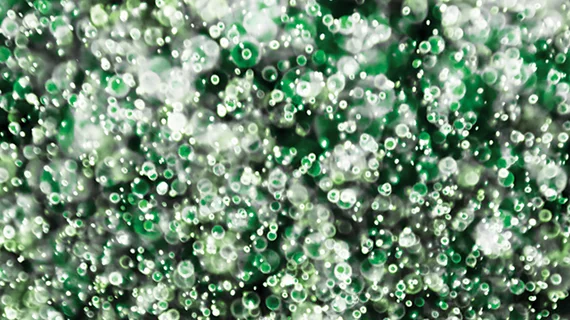Research from the Lawrence Berkeley National Laboratory has found light-emitting fragments known as alloyed upconverting nanoparticles, or aUCNPs, offer a unique window for radiologists to see deep into living tissue with little risk, potentially leading to high-precision radiation treatments.
The nanoparticles can be excited by ultralow-power laser light at near-infrared wavelengths safe to humans, according to the research, published Aug. 6 in Nature Communications. They absorb that light before emitting their own, which can be measured with standard imaging equipment.
Bruce Cohen, a part of the Berkeley team that’s working with University of California, San Francisco researchers to adapt the particles for medical use, said in a release from Berkeley and the U.S. Department of Energy that some existing imaging systems use higher-powered laser light—something that’s risky and can damage cells.
“With a laser even weaker than a standard green laser pointer, we can image deep into tissue,” he said. “The challenge is: How do we image living systems at high sensitivity without damaging them? This combination of low-energy light and low-laser powers is what everyone in the field has been working toward for awhile.”
Cohen said the laser power needed to energize aUNCPs is “millions of times lower” than that needed for run-of-the-mill near-infrared imaging probes.
The team’s latest study found the nanoparticles successful in imaging live mouse tissue several millimeters deep. After injecting mice’s mammary fat pads with the nanoparticles, the researchers said they recorded images of the light emitted by the particles. Nothing seemed to be toxic to the animals, they said, and the lasers were weak enough to avoid causing any damage.
“We never would have thought of using these for imaging during surgeries,” Cohen said, nodding to study author and UCSF radiation oncologist Mekhail Anwar, MD, PhD. “Working with researchers like Mekhail opens up this wonderful cross-pollination of different fields and different ideas.”

